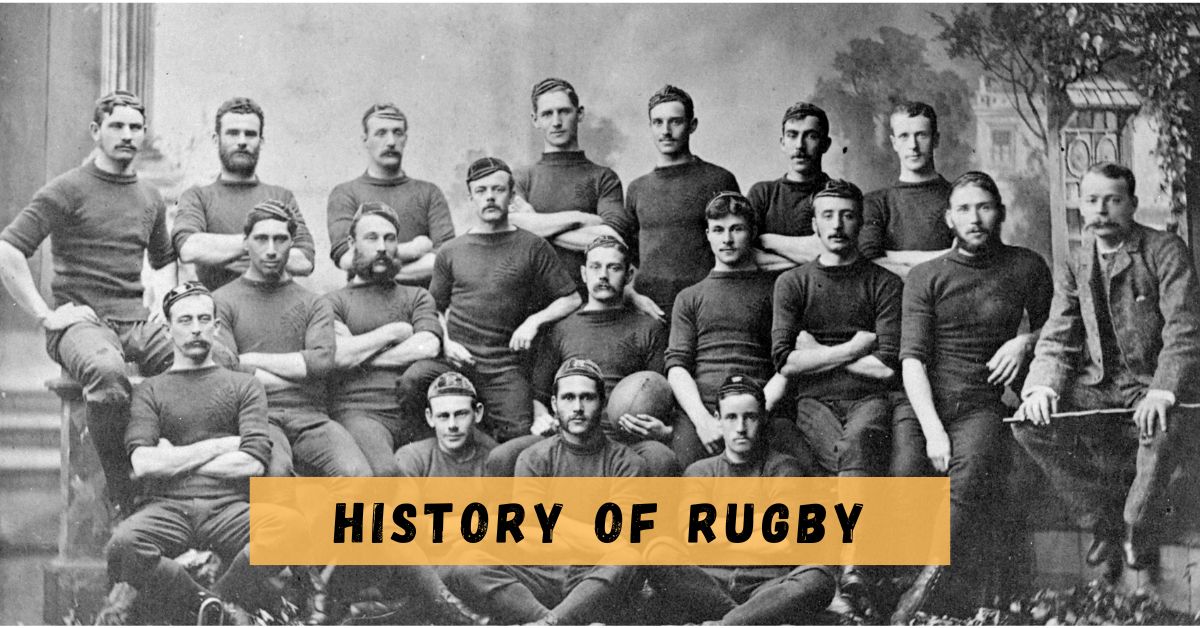From the muddy commons of English public schools to the immaculate turf of modern-day stadiums, rugby has undergone a tremendous transformation over the years. The sport, characterized by its physicality and camaraderie, has rooted itself deeply not just in British culture but also on a global scale, offering moments of athletic brilliance and human drama. Let’s embark on a journey to explore the rich history of rugby.
Origin of Rugby: Its Inception in Educational Fields
The genesis of rugby is commonly attributed to Rugby School in Warwickshire, England, where in 1823, a young student named William Webb Ellis supposedly picked up the ball and ran during a game of football. While the tale is likely more legend than fact, it does pinpoint the early association of rugby with educational institutions. The game spread from schools to universities and soon after, to local clubs, laying the foundation for the sport we now know as rugby.

The Development of Rugby Over Time
From the sport’s early days, two main codes emerged: Rugby Union and Rugby League. Rugby Union, governed by World Rugby, is perhaps what most people are familiar with and is characterized by 15 players per side and scrums. Rugby League, with 13 players, is especially popular in regions of England and Australia. Over time, both codes have seen transformations in strategy, player physique, and even scoring, adapting to the changing demands of athleticism and viewership.
The Ascendancy of Global Competitions
International rugby captured the imagination of fans with the introduction of the Home Nations Championship, now known as the Six Nations, and the Rugby Championship in the Southern Hemisphere. However, it was the inception of the Rugby World Cup in 1987 that truly globalized the sport, offering a stage for emerging rugby nations and cementing the game’s international status.
Overcoming Gender Restrictions in Rugby
Though initially dominated by men, women’s rugby has seen a tremendous surge in popularity and recognition. The introduction of the Women’s Rugby World Cup in 1991 was a significant milestone. Today, women’s rugby is one of the fastest-growing sports globally, demonstrating the game’s universal appeal and ability to break down gender barriers.
A Quick Numerical Glance at Rugby’s History
| Era | Significant Evolution | Notable Players |
|---|---|---|
| 19th Century | Formation of basic rules | William Webb Ellis |
| Early 20th Century | Rise of international fixtures | Willie John McBride, Colin Meads |
| Mid 20th Century | Professionalism and media | Gareth Edwards, Jean-Pierre Rives |
| Late 20th Century | World Cup and commercialization | Jonah Lomu, Martin Johnson |
| 21st Century | Expansion and modernization | Richie McCaw, Dan Carter |

The Final Whistle: Reflecting on the Legacy
Rugby, with its convincing history, fills in as a confirmation not exclusively of athletic ability but also as an account of social change, worldwide brotherhood, and social importance. From its starting points in the schoolyards to its status as a worldwide scene, rugby has developed into an extensive game that charms fans from varying backgrounds.
Basically, the game isn’t simply a challenge of solidarity and technique but a story of progress, solidarity, and the continuous quest for greatness. As rugby keeps on developing, its convincing heritage guarantees that it will proceed to interest and move, promising a future as energetic as its past.
Read More: America’s Pastime: A Comprehensive History of Baseball
